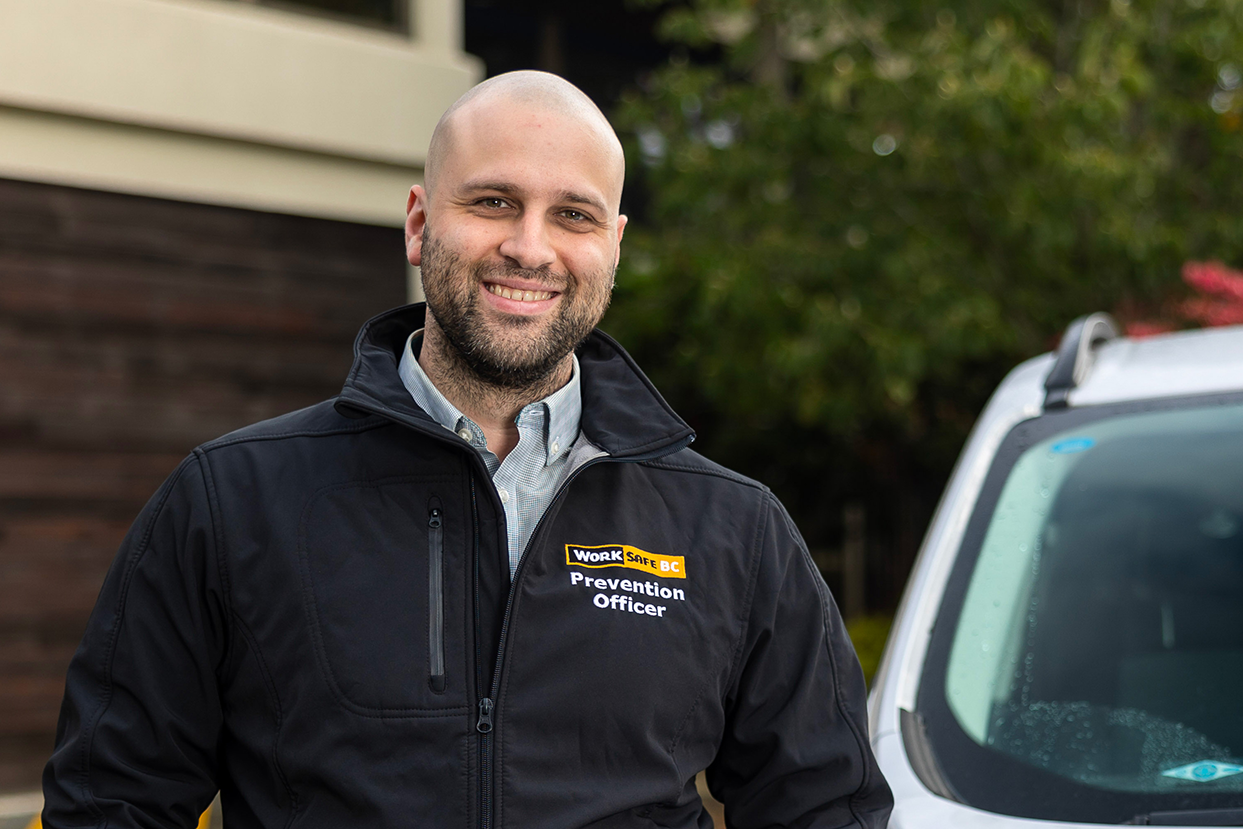Ask an officer: Preventing exposure to toxic chemicals from cured-in-place piping
Cured-in-place piping (CIPP) is a trenchless method of repairing sanitary sewer and stormwater pipes using a flexible, resin-soaked liner inserted into a damaged pipe. The liner is then pressurized and hardened to mould to the shape of the original pipe. We talked with occupational hygiene officer William Roff about the exposure hazards of CIPP.
William Roff
Occupational hygiene officer, Victoria
Years on the job: 5
What does an employer need to be aware of when it comes to using CIPP for pipe repairs?
Knowing more about this complex process helps to identify, assess, and control the associated hazards. The varieties of resin (styrene-based, non-styrene based, and vinyl ester) and the hardening methods (hot water, steam, or ultraviolet light) can present different hazards. Vapour from a styrene-based resin can be a health hazard, and steam curing releases a plume containing resin vapour. Exposure risks need to be considered throughout the process, from soaking the liner to commissioning the new pipe.
Aside from chemical exposure risk, what are some of the other risks to worker safety?
CIPP work is often done during infrastructure projects or on construction sites. These sites can include other hazards, such as working near roadways, around mobile equipment, in confined spaces, and around pressurized equipment. Styrene exposure can also amplify the effects of hazardous noise. A job hazard analysis is a helpful tool during the planning stage.
What are an employer’s responsibilities for keeping their workers safe?
Employers must plan CIPP work with health and safety at the forefront. Workers must be informed of the hazards and provided with instruction and training on safe work procedures. Effective supervision will ensure worker safety and quality of the end product.
What are some safe work practices?
Where possible, employers should consider using the least toxic resins and curing methods. Otherwise, ventilation is one of the best means of reducing chemical exposure. Exhausted air should be directed to a safe, unoccupied location. Workers must wear appropriate protective equipment, and know of and report any exposure symptoms to their employer. Workers who routinely work around styrene will quickly lose the ability to detect its odour. Air sampling can help address this issue by identifying areas and work tasks that may require additional control measures.
Is an exposure control plan required, and what should it include?
An exposure control plan (ECP) is required for styrene-based resins, and may be required for non-styrene resins. An ECP sets out roles and responsibilities, required education and training, and provides for risk identification, assessment, and control, among other required elements. The plan and procedures must be accessible and regularly reviewed with workers.
Is there a concern to the general public when this process is being used on a worksite?
Risk to the public is generally low due to dispersion and controls, but leaks can occur resulting in unintended vapour releases. Styrene odour is noticeable well below harmful levels; however, inadequate planning and control could result in concerns from adjacent public spaces or other workplaces. Employers should notify adjacent workplaces and residents ahead of the work so that any concerns can be addressed.
Where can I find more information?
We’re here to help. View our risk advisory on this topic.
You can also view information on working safely around confined spaces, WHMIS, and Occupational Health and Safety Regulation Part 5 (which relates to chemical and biological agents).
You can also contact our Prevention Information Line with questions. Call 604.276.3100 in the Lower Mainland, or toll-free at 1.888.621.SAFE from anywhere in Canada.
Is there a specific health and safety question you would like our officers to address in a future “Ask an officer”? Send it to us at worksafemagazine@worksafebc.com, and we’ll consider your topic request.
This information originally appeared in the November/December 2022 issue of WorkSafe Magazine. To read more or to subscribe, visit WorkSafe Magazine.

